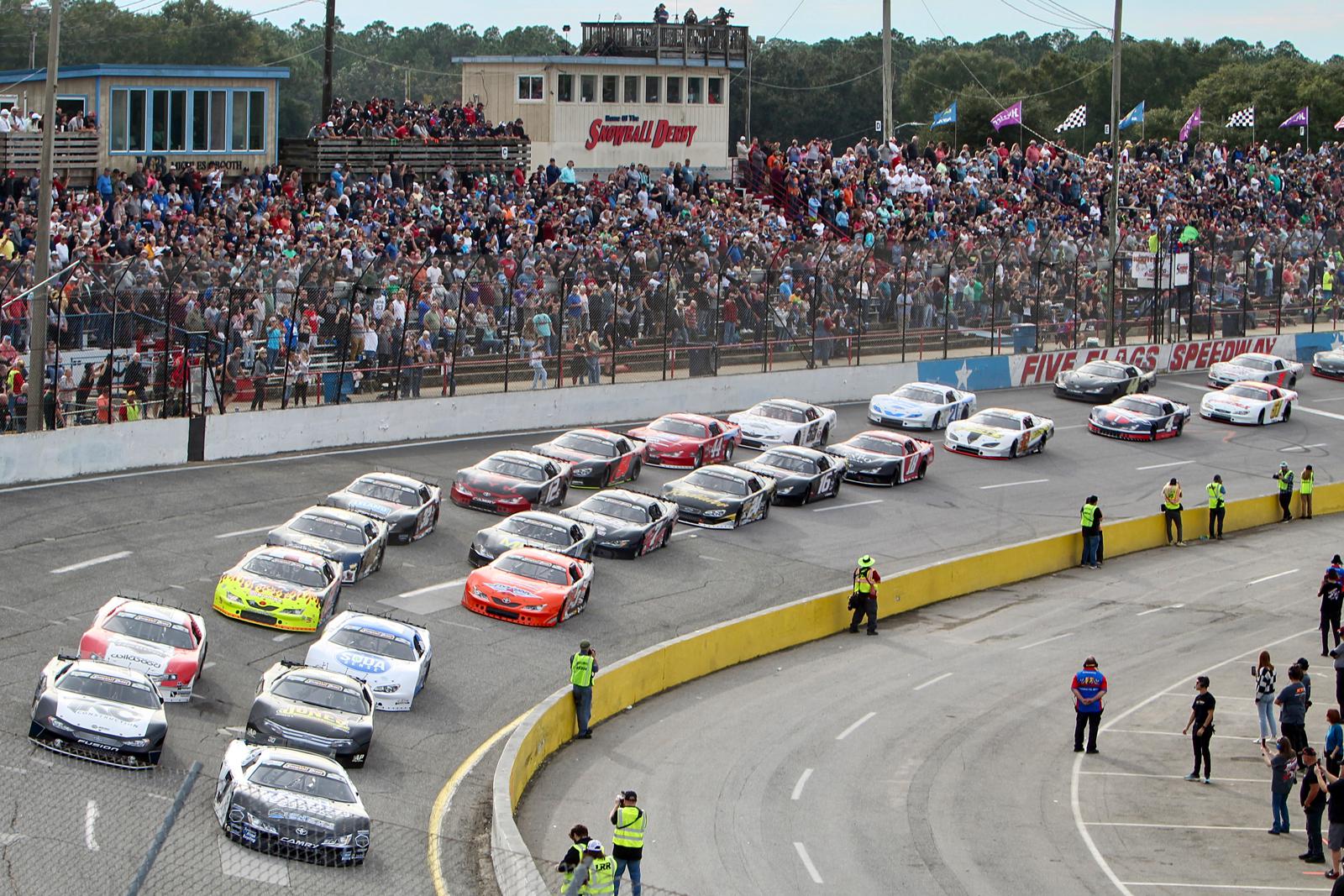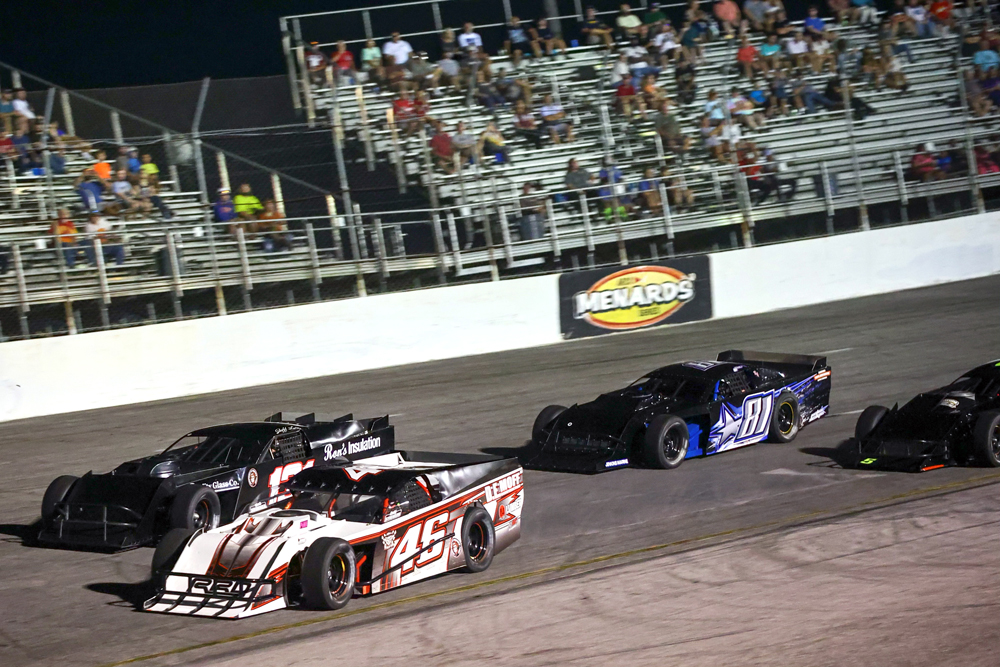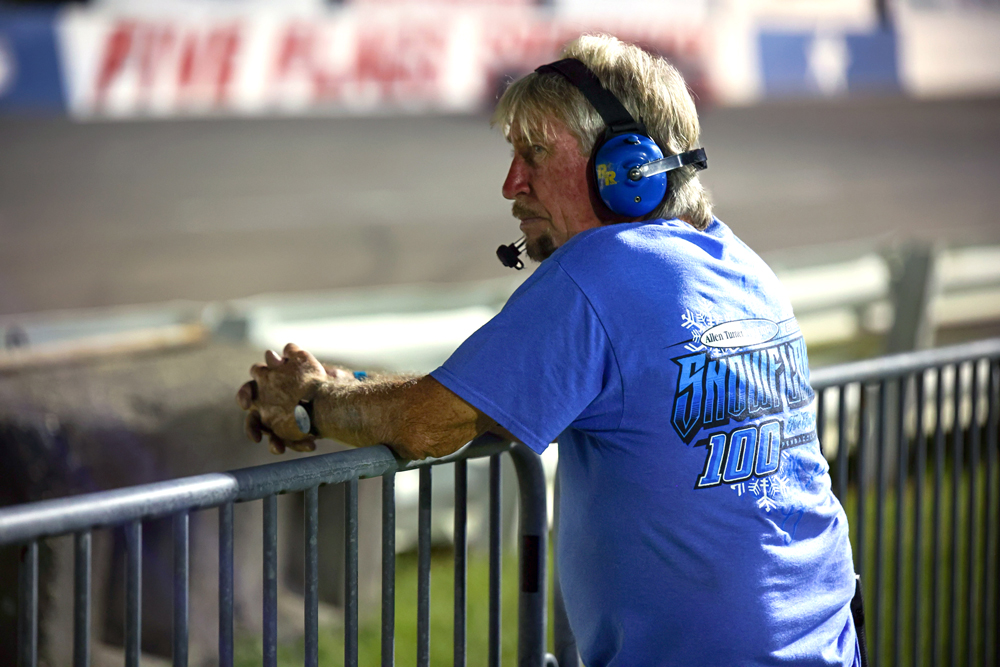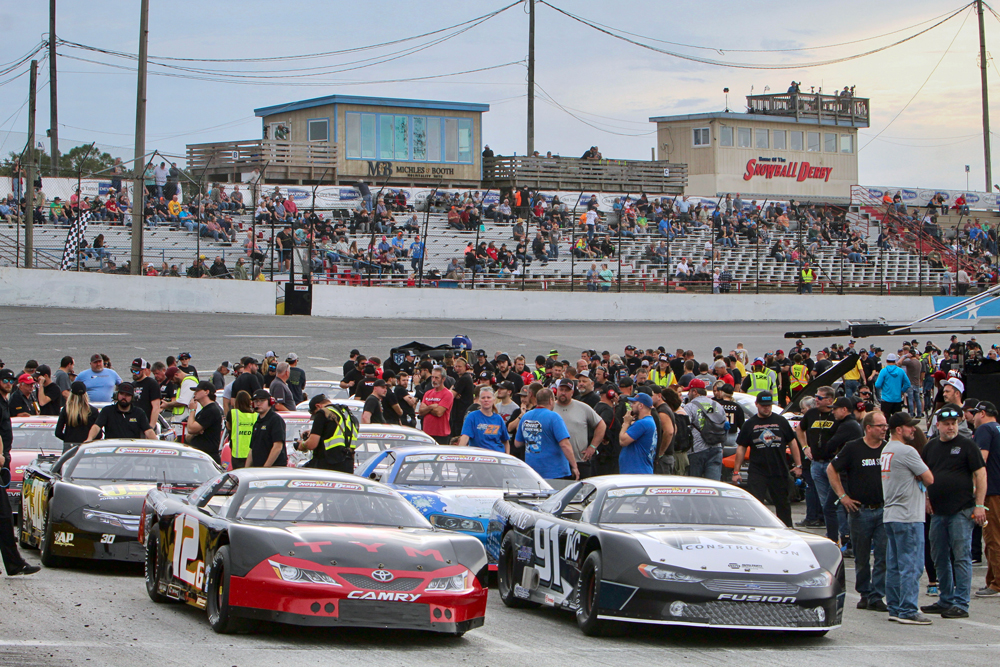Business Profile: Five Flags Speedway

The “Home of the Snowball Derby” is alive with activity beyond the popular end-of-season event.
“We like to experiment,” said Tim Bryant, who, with his brother Randy, operates Five Flags Speedway in Pensacola, Florida. “We like new things. We don’t like to just do the same things over and over—with the exception of the Snowball Derby, which we want to do over and over for many years to come.”
We spoke with Bryant while he was in the thick of preparing for the 2023 Snowball—the 56th running of the track’s marquee event—but he generously took the time to share his vision of the Speedway and its place in the racing world, both for his local community of racers and for those who travel much farther to visit the track every December to close out their traveling season.
Five Flags Speedway opened in 1953 and is named for Pensacola’s “City of Five Flags” nickname, which represents the various governments that have ruled the city during its history. The track’s paved half-mile, with 15-degree banking in the turns, provides what Bryant described as “a short-track fan’s idea of what short-track racing should be. It’s a fast track. It yields good side-by-side racing. And I believe it showcases a driver’s talent equal to the car’s technology. The best car with a mediocre driver isn’t necessarily going to always win out over a mediocre car with the best driver.”
Five Flags is known as a Super Late Model track, Bryant acknowledged, largely due to the influence of the Snowball Derby. “But we try to have a diversified schedule. We have a strong local contingent of different levels of racing.” In a busy schedule that runs from March through December, the track hosted the ASA Southern Super Series several times, Alan Turner Pro Late Models, plus events for sportsman, pure stock, Crown Stock, Outlaw, pro truck, and other divisions.
And then there’s the “other different activities,” as Bryant described them, that take place at the facility, like drifting, monster trucks, and car shows. “During COVID-19 we had a drive-in theater in the parking lot,” he said. “We try to keep the place busy.”
For most of its regular-season races, Five Flags Speedway draws competitors primarily from the Southeast, East Coast, and Midwest, Bryant said. For Snowball, on the other hand, “we’re coast-to-coast. We’ve got several Canadians entered, one racer from Mexico, and we’ve got California to Maine to the tip of Florida to Colorado.”
Enhance the Experience
The Snowball Derby, which started as a 100-lap event in 1968 and now runs for 300 laps, was the brainchild of the track’s then-owner, Tom Dawson. “I’m always quick to say that, when my family took over the race track in 2004, we inherited a marquee event,” Bryant said. “We take very little credit for what the Snowball Derby is, but we’ve worked really hard to enhance it. We know that each and every year we need to do something a little different, to try to enhance the experience. Especially for the fans, so their experience is more than just coming to a race.”
To that end, the Snowball Derby is now nearly a week-long festival. It starts with a kick-off party on Tuesday evening attended by the racers and livestreamed on Racing America. “People can get out and actually mingle with the drivers,” Bryant said, “and we do the same thing at the track on Wednesday night. We make a bit of a production about our qualifying drawdown, which signifies the qualifying order for the Snowball Derby. We put a stage in the pits and bring the drivers up, do short interviews with them, and let them do a draw. We have a local charity come in and serve chili, and we have live music. We have a lot of fun with that.”

Four nights of racing lead up to Sunday’s main event. “We’re fortunate to get some participation from NASCAR drivers each year, which is big for the fans,” Bryant said. He also believes those big-name drivers motivate “some of the short-track guys to go out and compete and beat those guys. We bill this race as the best-of-the-best of short-track racing. Certainly, we like the NASCAR drivers, but the tried-and-true short trackers are what this race is about.”
Much of the lead-up to the Snowball Derby is designed “to make our local drivers who race with us all year long feel a part of it,” Bryant added. That includes The Alan Turner Snowflake 100, the Pro Late Model race run the night before the Snowball. “This is its 20th year, and it has turned into a huge event in its own right,” he said. “It’s certainly one of the five biggest Pro Late Model races in the country. We’re pretty proud of that.
“I’ve always been a believer that activity spurs activity,” he continued. “The more we can draw in these guys, so each event for each division is their pinnacle for the season, that builds excitement. When guys come back to racing next March and start the new season, they’re already talking about Snowball. So we’re fortunate that we’ve been able to maintain that enthusiasm.”
Affordable for Racers
Encouraging local racers to participate in the star-studded Snowball Derby is one of several strategies Bryant employs to help his regulars, and those who don’t have the budgets of a national touring team.
“We work really hard to come up with ways to make racing more affordable for the racers, and that’s probably the biggest challenge we have, because costs are escalating at a rapid pace.” For example, Bryant elected to maintain the limits he set on tire purchases during the pandemic-related shortages. “We’re cognizant of the costs to these teams to be on the road for multiple-day shows, and we found out that we can conduct races and still limit the amount of tires people can buy—except for the Snowball Derby.”
Bryant also “works hard on rules packages to keep costs more affordable,” he added. “We work well with other sanctioning bodies, and we’re tightly affiliated with the new ASA group and involved in several committees within the ASA organization. We try to communicate with them and other sanctioning bodies outside of ASA and make sure that our rules are consistent. If there’s a new widget that comes on the market that costs a gazillion dollars, we try to make sure that we can keep that off of these cars. It’s hard to deny the fact that the better funded teams are always going to have a little bit of an advantage. But we pay close attention to the underfunded teams. We need them to continue coming to the race track, so we want to make sure that we do anything within our powers to help that happen.”

Those strategies appear to be working. Bryant said that car counts have remained “pretty steady this year. And our Southern Super Series that we also manage has averaged 30 cars a race. We’re pretty proud of that.”
When asked if he and the Five Flags team did anything differently than other tracks in the area, Bryant said, “I don’t know that I can put my finger on anything that we do differently, especially with neighboring tracks. Mobile Speedway to our immediate west; Stan Narrison, who runs Montgomery Motor Speedway just to the north; Scott Menlen, who runs the Fairgrounds Speedway at Nashville; Ben Sumner, who runs Crisp Motorsports Park in South Georgia, we all talk enough and work well enough together that we’re all kind of doing the same things. Even though our tracks are different, and our programs may be different, our philosophies are the same. I think that’s what racers like. They want some consistency wherever they go.”

That level of communication is very helpful in avoiding conflicts when it’s time to schedule races, Bryant said. “We work extremely close with the tracks in our region during the offseason. We make sure that if we do run on the same weekends, we’re running different divisions. And for the most part, we work with other series, even on a national level. We respect big events. We make sure that we don’t schedule an event of any size on top of an established marquee event for another track, and it doesn’t matter where it is.”
His relationship with neighboring tracks even extends to his crew pitching in when needed. “It’s not unlikely to see us helping at a neighboring track, and it works both ways. They come in and help us, too. We feel very good about the relationships that we have with other tracks.”
Community-Minded Business
The Speedway’s relationship with its neighbors is somewhat unique because the track has been there for 70 years. “Our community has kind of built up around Five Flags Speedway,” Bryant pointed out. “We’re a very community-minded business, and we participate in a lot of things locally. We contribute, and we make our facility available for a lot of organizations of a charitable nature. So we have a good relationship with our local community. Based on what I know some tracks have to deal with, we feel very blessed that we’ve got that kind of relationship with our community.”
And vice versa. Businesses in the area realize “how important, especially an event like the Snowball is to the local economy,” Bryant added. “Our county tourism bureau helps us with some marketing efforts for the Snowball, because they know it fills up a lot of hotel beds at what would normally be a down season for a tourist town. So they’re willing to help us, and we’re grateful for that.”

At other times of the year, though, being in a tourist town means the Speedway has to compete for the entertainment dollar. “During the summertime, we scratch and claw, like most tracks, to draw an adequate number of spectators to help us pay for our events,” Bryant said. And then there’s the competition from the digital world. “Like most tracks, we’re streaming most of our events, so it’s our job to make the experience at the track even better than before, so that people don’t just decide to stay home and watch it on TV.”
Facility improvements are among the ways he’s working to keep fans in the stands, but he admitted that’s “a work in progress. We couldn’t make all the improvements that we wanted overnight once we took ownership, but every year we put something back into the track. Over our 20-year run we’ve made a ton of improvements. After we purchased the track we put in some new grandstands, and we’ve built some hospitality suites. We’re continuing to upgrade as we go. And we think that has worked in our favor. If we had made all the improvements on Day One, once the new wears off, you’ve got to find something else to get people’s interest. So out of necessity, I think slow, steady growth has been our friend.
“You know,” he added, “our mission statement, if we had one, would be simply to make everyone’s experience, regardless of which gate they go through, a good one. We do everything and to the best of our ability to make sure that happens.”
 MEMBERSHIP LOGIN
MEMBERSHIP LOGIN JOIN PRI
JOIN PRI


